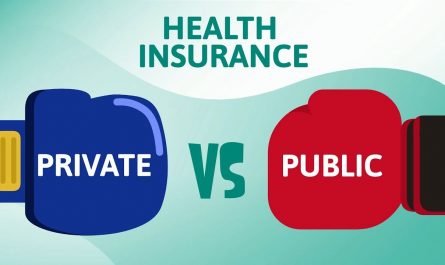Navigating the world of health insurance can be overwhelming. With ever changing regulations, complex plan structures, and a wealth of information available online, many individuals end up relying on common myths that lead to poor decision making. In this extensive guide, we will debunk five widespread health insurance myths and explain the real facts behind each misconception. Whether you are shopping for coverage on the Marketplace, evaluating an employer-provided plan, or trying to understand your options under the Affordable Care Act (ACA), having the right information is critical to protecting your financial and physical well-being.
Understanding these myths not only empowers you to make better coverage decisions but also helps you navigate your plan’s details such as premiums, deductibles, copayments, and out-of-pocket costs with confidence. In the sections that follow, we’ll address each myth separately and provide clear, evidence-based explanations supported by expert insights.
Myth 1: “I Don’t Need Health Insurance Because I’m Young and Healthy”

A common misconception is that if you are young, fit, and free of chronic conditions, you can safely skip health insurance. Many people believe that a healthy lifestyle equates to immunity from unexpected illnesses or accidents. However, this myth ignores the unpredictable nature of life.
Why Being Young Isn’t a Guarantee
Even if you feel healthy now, accidents and sudden illnesses can strike without warning. Consider the following points:
- Accidents Happen: Whether it’s a car accident, sports injury, or a slip and fall, accidents are a real risk for everyone. Medical bills resulting from trauma can run into tens of thousands of dollars.
- Sudden Illnesses: Conditions such as appendicitis, infections, or even unexpected diagnoses (e.g., cancer or heart conditions) can occur at any age.
- Preventive Care: Health insurance often covers preventive services like annual checkups, immunizations, and screenings that are essential for early detection and disease prevention. These services are usually provided at no extra cost and can catch health issues before they become severe.
The Financial Protection Factor
Without health insurance, even a minor injury can turn into a major financial burden. For example, a simple emergency room visit without coverage might cost you hundreds or even thousands of dollars. On the other hand, having a plan in place provides a financial safety net, ensuring that you are not faced with exorbitant bills in the event of a health crisis.
Key takeaway: No one is immune to unforeseen health issues. Health insurance is not just for the chronically ill or elderly; it’s a crucial tool for everyone, regardless of age.
Real-Life Examples
Consider stories from individuals who, despite their youth and robust health, were forced to confront unexpected medical emergencies. Many have reported being hit with bills that they never imagined, making it clear that insurance isn’t merely an expense it’s an investment in your future well-being.
By debunking this myth, we learn that health insurance is a critical safeguard that offers both preventive care and emergency financial protection. Even if you are young and healthy, the unpredictable nature of life means that a comprehensive health insurance plan is always a wise choice.
Myth 2: “The Cheapest Plan Is Always the Best Plan”
When choosing a health insurance plan, many consumers are drawn to the lowest monthly premium. However, a low premium does not necessarily mean that a plan is the most cost-effective or suitable for your needs.
Understanding the Trade-Offs
Health insurance plans come with various cost-sharing features:
- Deductible: The amount you pay out-of-pocket before your insurance begins to cover expenses.
- Copayment: A fixed fee you pay for certain services, such as doctor visits or prescription drugs.
- Coinsurance: The percentage of costs you pay after meeting your deductible.
A plan with a low premium might have a high deductible or substantial coinsurance, which means that you could end up paying much more when you actually need care.
Evaluating Your Personal Health Needs
Your choice should depend on your overall health and expected usage:
- For Healthy Individuals: If you rarely visit a doctor and have minimal prescription needs, a lower-premium, high-deductible plan might be acceptable.
- For Those with Chronic Conditions: If you require frequent medical care or ongoing treatments, a plan with a higher premium but lower out-of-pocket costs may be more cost-effective in the long run.
Expert Insight: When evaluating plans, consider both the monthly premium and potential out-of-pocket expenses. A comprehensive analysis might reveal that a plan with a slightly higher premium ultimately saves you money if it better covers your healthcare needs.
The Bigger Picture: Total Cost of Care
The total cost of care includes not only your monthly premium but also any deductibles, copayments, coinsurance, and other charges that you might incur throughout the year. Make sure to:
- Use cost estimator tools (such as those available on Healthcare.gov) to understand your potential expenses.
- Review your past medical spending to predict your future needs.
Case Studies and Data
Many studies have shown that individuals who choose plans solely based on the lowest premium end up facing unexpectedly high costs when they need medical care. Health economics experts emphasize that understanding the complete cost structure of a plan is crucial. This involves analyzing scenarios such as hospital visits, prescription costs, and specialist consultations.
Key takeaway: The cheapest plan on paper may cost you more in the long run if it doesn’t adequately cover your healthcare needs. Always weigh both premium costs and potential out-of-pocket expenses before making a decision.
Myth 3: “Health Insurance Will Cover 100% of My Medical Costs”
A widespread myth is that once you have health insurance, your medical costs are entirely taken care of. Unfortunately, this is far from the truth.
Understanding Coverage Limitations
While health insurance can significantly reduce your financial burden, most plans require you to pay a portion of your healthcare expenses:
- Deductibles: You must meet your deductible before most services are covered.
- Co-payments and Coinsurance: Even after meeting your deductible, you are responsible for a percentage of the costs.
- Out-of-Pocket Maximums: Your plan will only cover 100% of costs after you reach a certain out-of-pocket limit. Until then, you share the costs with your insurer.
The Fine Print
The details of what is covered and what isn’t are usually spelled out in the fine print of your policy:
- Exclusions and Limitations: Some treatments, procedures, or services may not be covered at all. For instance, certain experimental treatments or elective procedures might be excluded.
- Network Restrictions: If you receive care from an out-of-network provider, your costs could be much higher, or the service might not be covered at all.
- Preventive vs. Non-Preventive Care: While preventive care services (like vaccinations and screenings) are often covered at 100% under many ACA-compliant plans, other services will require cost-sharing.
Real-World Implications
Imagine you experience a serious injury that requires surgery, hospitalization, and follow-up care. Even if you have health insurance, you might still be responsible for:
- A large deductible.
- Significant coinsurance on expensive procedures.
- Additional fees for medications and follow-up visits.
These costs can add up quickly, which is why understanding the terms of your policy is essential.
Key takeaway: No health insurance plan covers 100% of your medical costs unless you have reached your out-of-pocket maximum. It’s crucial to budget for these shared costs and choose a plan that aligns with your financial situation and healthcare needs.
How to Protect Yourself
To avoid unpleasant surprises, take these steps:
- Review Your Policy: Carefully read the summary of benefits and coverage details.
- Ask Questions: If you’re unsure about what is and isn’t covered, contact your insurer or speak with a licensed insurance agent.
- Plan Ahead: Understand your deductible, co-payments, and coinsurance amounts before you need care. This proactive approach helps you avoid financial stress during a health crisis.
Myth 4: “I Can Change or Cancel My Health Insurance Whenever I Want”

Many consumers believe that health insurance policies offer complete flexibility and that they can switch plans or cancel coverage at any time without consequence. In reality, the rules governing health insurance changes are much more complex.
Enrollment Periods and Special Circumstances
Most health insurance plans have strict enrollment periods:
- Open Enrollment: This is the designated period during which you can sign up for or change your health insurance plan. Outside of this window, changes are typically not permitted unless you experience a qualifying life event.
- Special Enrollment Period (SEP): Events such as marriage, birth, or loss of other coverage can trigger a SEP, during which you can modify your plan. However, outside of these circumstances, you are generally locked into your plan until the next open enrollment.
Consequences of Unplanned Changes
Changing or canceling your insurance plan without proper timing can lead to significant gaps in coverage:
- Coverage Gaps: A gap in your health insurance can leave you exposed to high medical bills if an emergency occurs during that period.
- Penalties and Higher Costs: Some plans, particularly those under the ACA, may impose penalties or require you to pay higher premiums if you cancel your plan and then try to re-enroll later.
The Importance of Stability
While the idea of flexibility is appealing, stability in your health insurance is often more valuable. A consistent, reliable plan means that you know your coverage details and can plan your healthcare accordingly. Changing plans too frequently can be risky especially if the new plan has a different network of providers or varying cost-sharing arrangements.
Key takeaway: You generally cannot change or cancel your health insurance at any time. Understanding the rules around open enrollment and special enrollment periods is essential to ensure continuous, effective coverage.
Tips for Managing Your Coverage
To ensure that you make the most of your health insurance while avoiding disruptions:
- Mark Your Calendar: Keep track of your open enrollment period dates.
- Review Annually: Assess your healthcare needs each year and compare your current plan with alternatives during the open enrollment period.
- Stay Informed: Regulations can change, so it’s wise to keep up with updates from reliable sources like Healthcare.gov or your state’s insurance department.
Myth 5: “Employer-Provided Health Insurance Is Always Sufficient”
A common belief is that employer-sponsored health insurance is the best and only necessary form of coverage. While many people receive their insurance through their employer, it is important to understand the limitations and potential pitfalls of relying solely on this benefit.
Limitations of Employer-Sponsored Plans
Employer-based plans, while convenient, often come with several drawbacks:
- Limited Coverage Options: Employers typically select a few plan options for their employees. These plans may not always meet the diverse needs of every individual.
- Portability Issues: If you change jobs or become unemployed, you might lose your coverage. Although options like COBRA exist, they can be expensive.
- Cost Shifting: Although employers often subsidize a significant portion of the premium, rising health care costs can lead to reduced wage growth as employers adjust compensation packages to offset higher insurance costs.
The Hidden Costs
Many employees assume that the premium paid by their employer means they are fully shielded from high healthcare costs. However, this isn’t always the case:
- High Deductibles and Co-Payments: Even with employer-sponsored insurance, many plans now have high deductibles and substantial cost-sharing arrangements. This means that employees may still face significant out-of-pocket costs.
- Coverage Gaps: Not all employer plans cover every service. Some specialized care or out-of-network services may result in additional expenses.
Evaluating Your Employer’s Offering
It’s important to critically assess whether your employer’s plan truly meets your needs:
- Compare Plans: If your employer offers multiple plan options, compare them carefully. Look at both the monthly premium and the potential out-of-pocket costs.
- Supplemental Coverage: In some cases, it might be wise to purchase additional coverage such as a supplemental or gap insurance policy to cover costs not included in your employer’s plan.
- Long-Term Considerations: Consider what will happen if you leave your job. Planning for the transition between jobs by exploring individual market options or group plans through professional associations can be crucial.
Key takeaway: Employer-provided insurance is not a one-size-fits-all solution. While it can be a valuable benefit, it is essential to understand its limitations and plan accordingly for future healthcare needs.
Enhancing Your Coverage Strategy
To make the most of employer-sponsored health insurance:
- Ask Questions: Don’t hesitate to speak with your HR department or benefits coordinator to clarify what is covered.
- Plan Ahead: Consider how changes in your life such as marriage, starting a family, or health issues might affect your coverage needs.
- Stay Flexible: Explore supplemental policies or alternative options during open enrollment periods to ensure that your health care needs are fully met.
Conclusion: Empowering Your Health Insurance Decisions
Understanding the true nature of health insurance is essential for making informed decisions that protect your health and financial well being. By debunking these five common myths, we can see that:
- No one is immune to unexpected health issues:even if you are young and healthy, you need insurance to safeguard against unforeseen accidents or illnesses.
- The cheapest plan is not always the best plan: When evaluating insurance options, it is important to consider the total cost of care including deductibles, copayments, and coinsurance along with the premium.
- Health insurance does not cover 100% of your costs.:Understanding the fine print of your policy will help you prepare for out-of-pocket expenses until you reach your out-of-pocket maximum.
- You cannot change your health insurance plan whenever you wish: Knowledge of open enrollment periods and special enrollment rules is key to maintaining continuous coverage.
- Employer-provided insurance, while valuable, may not be sufficient on its own: It’s important to assess its limitations and plan for additional coverage if needed.



